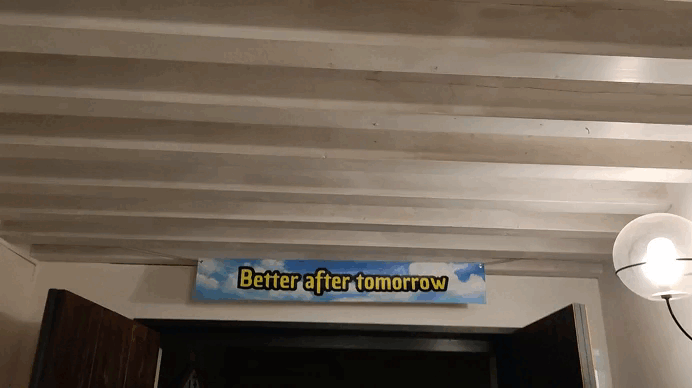ON VIEW UNTIL JULY 20TH


BEST BEFORE YESTERDAY
Relais Santa Corona, Vicenza
05.29 – 06.29.2025
The title of the exhibition Best
Before Yesterday takes its cue
from the expiration dates
stamped on everyday
consumer goods to explore our
relationship with temporality
and the precariousness of
contemporary experience.
Objects, desires, ideas and
interpersonal connections
today seem to be caught in an
ever-accelerating life cycle —
consumed, replaced and
Relais Santa Corona, Vicenza
05.29 – 06.29.2025
The title of the exhibition Best
Before Yesterday takes its cue
from the expiration dates
stamped on everyday
consumer goods to explore our
relationship with temporality
and the precariousness of
contemporary experience.
Objects, desires, ideas and
interpersonal connections
today seem to be caught in an
ever-accelerating life cycle —
consumed, replaced and
discarded at a pace that
appears unstoppable.
Moving along the fine line
between decay and
regeneration, the exhibition
delves into the evocative and
generative power of the
fragment, the unfinished, and
the unresolved. Rather than
celebrating disintegration for
its own sake, the works on
display interrogate the unstable
condition of the present,
finding in discontinuity a new
form of aesthetic and
theoretical authenticity.
appears unstoppable.
Moving along the fine line
between decay and
regeneration, the exhibition
delves into the evocative and
generative power of the
fragment, the unfinished, and
the unresolved. Rather than
celebrating disintegration for
its own sake, the works on
display interrogate the unstable
condition of the present,
finding in discontinuity a new
form of aesthetic and
theoretical authenticity.
Best Before Yesterday does not
simply observe fragmentation
and decay as inevitable
conditions; instead, it suggests
that by recognizing and
embracing precariousness, we
can discover a new way to
redefine our relationship with
what we consider finished or
obsolete. Instability thus
becomes a dynamic force — a
continuous invitation to
reconsider and regenerate what
might otherwise seem
irretrievably past.
simply observe fragmentation
and decay as inevitable
conditions; instead, it suggests
that by recognizing and
embracing precariousness, we
can discover a new way to
redefine our relationship with
what we consider finished or
obsolete. Instability thus
becomes a dynamic force — a
continuous invitation to
reconsider and regenerate what
might otherwise seem
irretrievably past.